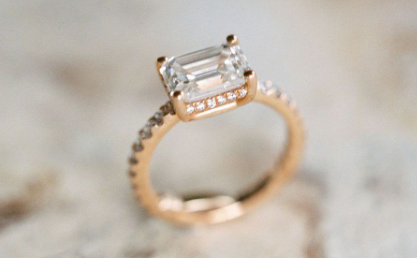Finding the perfect ring can be a daunting task, but it’s important to get the size right to ensure comfort and prevent the ring from slipping off. A ring sizing chart is a valuable tool that can help you determine your finger size accurately. In this comprehensive guide, we’ll delve into everything you need to know about ring sizing charts, including how to use them effectively, factors to consider for an optimal fit, and tips for getting the most accurate measurement.
Understanding Ring Sizing Charts
A ring sizing chart is a reference table that correlates finger circumference in millimeters or inches to standard ring sizes. These charts typically encompass a wide range of sizes, catering to most finger shapes and sizes.
There are two main types of ring sizing charts:
- Millimeter-based charts: These charts utilize millimeters (mm) to represent finger circumference. Millimeters are a unit of the metric system, and using a millimeter-based chart is often considered more precise than using inches.
- Inch-based charts: These charts express finger circumference in inches. Inches are a unit of the imperial system, which is commonly used in the United States.
When using a ring sizing chart, it’s crucial to ensure you’re using the correct chart (millimeter or inch) to avoid any miscalculations in determining your ring size.
How to Use a Ring Sizing Chart
Using a ring sizing chart is a straightforward process. Here’s a step-by-step guide:
- Gather your materials: You’ll need a printable ring sizing chart, a ruler with millimeter or inch markings (depending on the chart you’re using), a pen, and a strip of paper.
- Print a ring sizing chart: You can find a variety of printable ring sizing charts online. Ensure the chart is clear and easy to read.
- Measure your finger: Wrap the strip of paper comfortably around the base of your finger where the ring will sit. Mark the spot where the paper meets to create a complete loop.
- Measure the distance: Lay the marked paper flat on your ruler. Using the millimeter or inch markings on the ruler, carefully measure the distance between the mark you made on the paper.
- Match the measurement to the chart: Locate the distance on the ring sizing chart that corresponds to the measurement unit (millimeter or inch) you used. The corresponding size on the chart is your ring size.
Factors to Consider for an Optimal Fit
While ring sizing charts are a helpful tool, it’s important to consider several factors to ensure an optimal fit:
- Knuckle size: If you have larger knuckles compared to the base of your finger, you might need a slightly larger ring size to ensure the ring can comfortably slide over your knuckle.
- Ring width: Wider bands tend to feel snugger than thinner bands. If you’re opting for a wider ring, consider going up half a size to maintain comfort.
- Temperature: Your fingers can fluctuate in size throughout the day due to temperature variations. It’s recommended to measure your finger size when your hands are warm, as your fingers tend to be slightly larger during this time.
- Dominant hand: Your dominant hand might have a slightly larger ring size than your non-dominant hand. It’s advisable to measure both hands and choose the larger size if there’s a discrepancy.
Tips for Getting the Most Accurate Measurement
Here are some additional tips to ensure you get the most accurate measurement from a ring sizing chart:
- Measure multiple times: Don’t rely on a single measurement. Take several measurements throughout the day, especially when your hands are warm, and take the average of your readings for better accuracy.
- Measure at the end of the day: Your fingers tend to be slightly swollen towards the end of the day, so measuring at this time can help ensure the ring fits comfortably throughout the day.
- Consider using a ring sizer: A ring sizer is a small plastic tool with various-sized rings that you can slip onto your finger to determine the most comfortable fit. Ring sizes can be a helpful alternative to using a sizing chart, especially if you have concerns about the accuracy of your measurements.
- Get sized at a jewelry store: If you’re unsure about your ring size or have any concerns, it’s always best to get sized at a reputable jewelry store. A professional jeweler can use their expertise and tools to ensure an accurate measurement.
Conclusion
I hope I guided you well on a ring sizing chart. Finding the perfect ring size is essential for comfort and wearability. By understanding ring sizing charts, using them effectively, and considering the factors that can influence fit, you can increase your chances of selecting a ring that fits.










